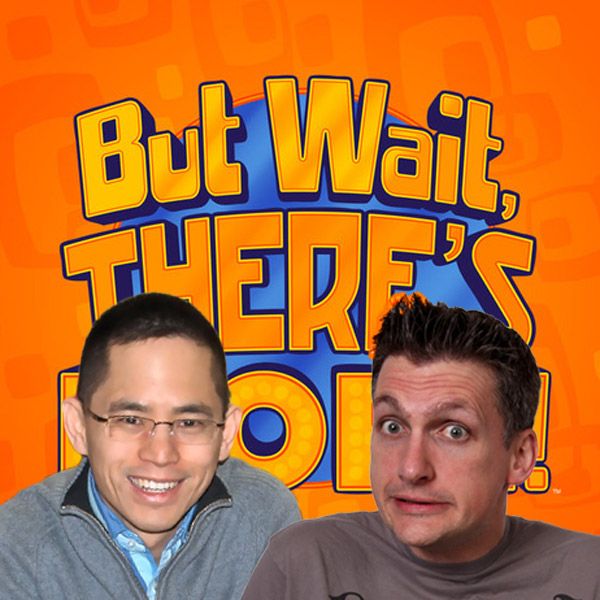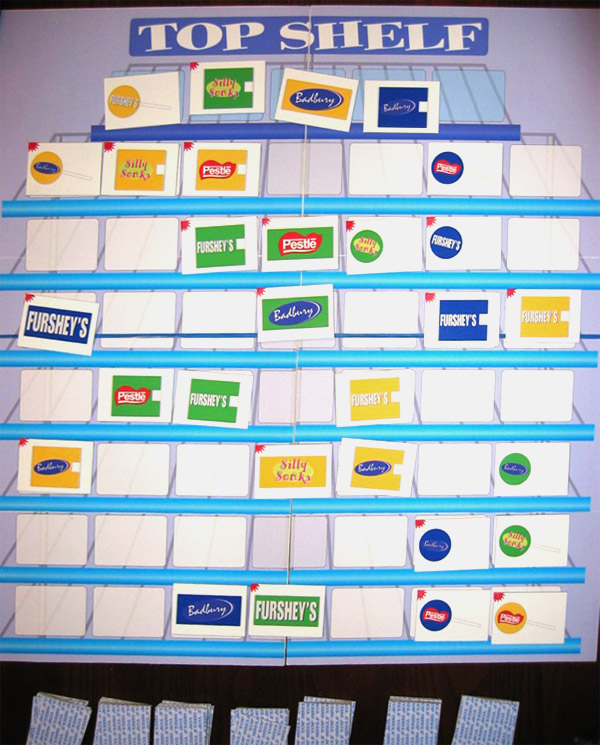But Wait, There's More! An Interview with Game Design Duo Sen-Foong Lim and Jay Cormier

Sen-Foong Lim and Jay Cormier are the game design duo behind several games ranging from high strategy (Belfort) to family dice rolling (Tortuga) to party word games (Train of Thought) and micro games (This Town Ain't Big Enough). They're now in the midst of a Kickstarter campaign for their latest party game, an infomercial-style improvisation game called But Wait, There's More! We reached out to find out more about their past, present, and future — and in the process, we discovered some great insights for aspiring game designers.
CGR: Hi, Sen and Jay! Thanks for taking a moment to speak with us. You guys seem to be an inseparable pair, having designed several successful games together. Could you tell us a little about your background and how you got started with game design?
Sen: It's a tale as old as time, really. Boy meets boy, boys play games, boys make games. We met at McMaster University way back at the turn of the century. Wow, that makes us sound old!
We did a lot of stuff together — watched movies, played video games, acted in plays together, and were housemates on several occasions. Basically, we did what any young, red-blooded university student did: anything but study!
Jay's work took him out west and I was starting a family back in Ontario. We couldn't game together and playing video games online required we be on the same time schedule, which was rare. We were looking for something we could do together, but asynchronously. And it was board game design!
Jay: While I always loved playing games growing up and even remember designing my own paper system games and creating some D&D adventures, I never really got fully invested into the game world until I met Sen. When I met him he was playing these crayon based rail games that looked super confusing to me at the time! We did play a lot of Supremacy, which was like a waaaay better version of Risk since it had action selection. That was my first real experience with those kinds of meaningful decisions. Then along came Magic. Sen sucked me in quite easily, and we were both hooked for a long time. I think Sen managed to get out and sell his entire collection to fund a portion of his education!
CGR: You have come up with all kinds of games, from deep strategy games to party games. What types of games do you enjoy the most, both playing and designing?
Sen: I like games with high levels of social interaction that create memories, but do so with less "epic luck" and more through clever play. So games like Basari and I'm the Boss are very appealing to me. I also have two boys, ages 6 and 10, so games that I can play with the whole family on a competitive and fun level are very important, as well.
I prefer to design games of skill rather than games of chance, but those that allow people who might be younger or newer a chance to succeed in the game.
Jay: I really like the 60-120 minute Euro the most. Of the Euros, I like almost every type of mechanic but I am particularly fond of tile-laying games! As for designing, I really do love designing all sorts of games. I love that Sen and I don’t care at all what kind of game we make — whatever fits with the idea that we have. So, sometimes a game is meant to be a party game and sometimes it’s more of a strategy game. Sen and I are now trying to stay balanced and have one of almost every type of game on the go.
We attend a few conventions in which we meet with numerous publishers and it’s always been beneficial to have different types of games ready to pitch since each publisher wants different things. Right now, even though we’re still coming up with whatever games we want — based on our ideas — we are trying to start working on our next meaty Euro game.

Jay: Here’s a pic of the first game Sen and I designed called Top Shelf. It has never been published! We do like it but there’s a lot we’d change in it now. We’ve grown so much as designers — it’s amazing to look back at our early designs! I think this is amazing when you think about it…as a message to all new designers out there — hey, you’re first game, or two, or three might not be that great…but keep at it and eventually you’ll get better and better, and then, bam! All of a sudden you’ve got 10 games published (*note: all of a sudden might take 5-10 years!)
Next Page: Coming Up with New Ideas and Details About But Wait, There's More!




